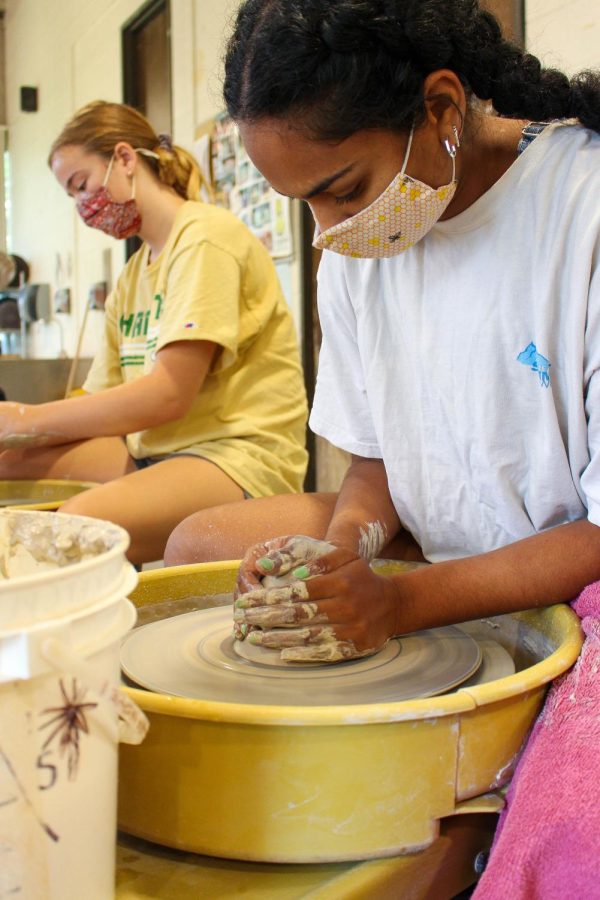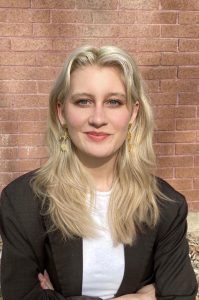Starving Artists? How Academic Environments Affect Students’ Mental Wellbeing
(Photo by Gwen Christopherson | The Daily Utah Chronicle)
October 4, 2021
Oh, how we love art! Some of us are lucky enough to study art at a professional level, particularly under the guidance and support of the College of Fine Arts here at the University of Utah. Student art is a remarkable contrivance, as breathtaking works fill up the walls of the Gittins Gallery, the stage at Kingsbury Hall and even the cover of our newspaper.
However, art students often get a bad reputation from the professional sphere, plagued by the “starving artist” trope reinforced by passive aggressive uncles at the Thanksgiving dinner table. The truth is that art is fascinating to study, and the vulnerability of expression is challenging for students, so much so that it can take serious negative turns on mental health.
Starving Artists
“There’s a lot that has to do with what you’re putting in … I feel very pushed to give my all when sometimes I am just so exhausted and I don’t want that to come off as though I don’t care,” said Actor Training Program student Isabelle Siebeneck. “For me,” they continued, “as someone who is so harsh on myself already, it’s hard to take that step back and exist in a world where you’re trying to get an ‘A’ from someone.”
Art, of course, is subjective by nature, but this subjectivity can manifest negatively when forced into academia. “I don’t really take mental health days — I don’t say, ‘Oh, I want to sleep in,’” said Siebeneck. “Taking a break would feel like giving up, which is something you don’t do with art. You don’t give up.”
The narrative that an artist has to be struggling or in pain to produce emotionally-dense art is extremely detrimental, especially for students. It can take serious, negative turns for mental health, even when there’s not a passing or failing grade on the line. “If I’m in a time where I don’t know what I want to make, it’s very discouraging … No one is creative 24/7,” said art major Max Hubbard. Students shouldn’t feel forced to choose between growing in their art and making a deadline.
“When things get hard, it’s hard to be an artist,” continued Hubbard. Beyond the unnatural coercion for art to be thrown on a point scale, the vulnerability of being an artist is exacerbated by a classroom setting and can rob student artists of mental health.
“Being vulnerable is such a big part of acting, especially when you’re supposed to be vulnerable in front of hundreds of people or in front of someone who is grading you,” Siebeneck said, adding, “It requires a healthy, confident person to be vulnerable and create.”
Classroom Care
From student testimonies, we touch on the discovery that a growing artist can do their best work when nurtured by their environment. This is especially true for students, as the university has to simultaneously challenge and support its students without sacrificing their brains and hearts. For many, this care stems from the support of individual identity.
“The Theatre Department works hard to be more inclusive of all identities. Honestly, just hearing a professor use ‘they’ to refer to me has been a positive experience … [It] allows me to be more vulnerable and in turn allows me to feel better in my craft,” said Siebeneck.
Hubbard shares that being at the U has, “been kind of surreal. My professors are so nice and the conversations about art [have] been so inspiring and exciting for my future as an art student … It positively impacts mental health.”
Again, students feel strongly that artists in an academic setting must be supported by the classroom to become comfortable enough to accept the vulnerabilities that come with art. “It’s exciting because we are all in the same headspace, because we’re all art majors looking at each other’s art from an artist’s standpoint,” said Hubbard.
“I got to do a scene where my character was queer, and that felt so good because it was really the first time where I was in a role that had intimacy in a romantic sense that I was comfortable with. Being able to explore queerness in my craft has been a very positive experience,” said Siebeneck.
This foundation of a positive work environment has yielded successful graduates, such as the Art and Art History Department’s Spring 2021 Outstanding Senior Malithi Gunawardena. “The education I received really prepared me to work in terms of knowing [how] to manage and handle mental health and in terms of hard skills as well,” said Gunawardena. “It’s relieving. I feel like I was really well prepared for the world and what the workplace has me do,”
Hearing from a successful graduate sheds light on those of us fully in the thralls of pursuing higher education. When asked for advice for current students, Gunawardena smiled and said, “Learn that creative confidence takes time … Work hard, be nice.” The bottom line is that learning to create art from a vulnerable, internal place takes an supportive environment. Here, both the art and artist can flourish.









